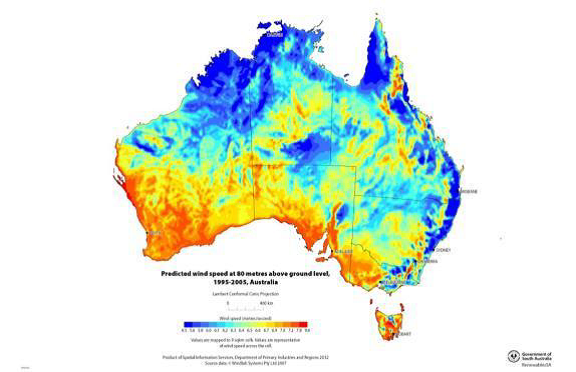Australia has fallen behind similar economies around the world in the generation of renewable energy, a new report has found.
The Climate Council’s new report, The global renewable energy boom: How Australia is missing out, says that despite having enough renewable energy resources to power the country 500 times over, jobs and investment in the renewables sector have fallen sharply since the Coalition government came to power.
Around the world, investment and jobs in renewable energy are booming. Investment in clean energy sources grew in China by 32%; in the US by 8%; in Japan by 12%; and in Germany and Britain by 3% each last year.
But in the same period in Australia, investment fell by 35%. Investment in large-scale renewable energy fell by 88% due to uncertainty over the future of the Renewable Energy Target (RET). Industry groups say that investment in clean energy has virtually ceased.
Around the world more than 800,000 jobs in renewable energy were created last year. The US solar industry alone added more than 31,000 new jobs, an increase of 21.8% on the previous year.
But in Australia, figures from the Australian Bureau of Statistics (ABS) reveal that the renewable energy sector has lost almost 2500 jobs since the government was elected. Job numbers in the sector peaked in 2012 at 14,890, but fell by 15% to 12,590 last year.
It is clear that the global boom in renewable energy is a lasting shift away from other energy sources, such as coal, urged on by the threat to the survival of life if we continue to burn fossil fuels to create electricity.
Also driving this boom is the steep decline in the costs of wind and solar power. In the past five years, global wind power costs fell 14% and solar photovoltaic (PV) prices fell 75%.
Solar PV costs are projected to fall another 45% over the next five years, which would make it the cheapest form of electricity generation in many parts of the world. Globally, renewable energy is now as cheap or cheaper than fossil fuels for generating electricity.
Countries that are experiencing the most growth in renewable energy are those with a consistent, long-term energy strategy and specific policies relating to that strategy.
However, instability, uncertainty and changes in policies can negatively affect investors’ perceived risk, resulting in low levels of investment. This is what has happened in Australia under the current government.
The government has been locked in an impasse with the opposition over how much to cut from the RET. The current target is 41,000 gigawatt hours, which is likely to represent more than 20% of Australia’s energy needs in 2020. Both believe that this is far too high — although many would say it is not high enough — but they could agree on a new target.
On May 8, they agreed to cut the RET to 33,000 GWh, but Labor still objected to the government including the burning of native forests as a renewable energy source.
Business associations, including the Business Council of Australia, the Clean Energy Council and Energy Users Association of Australia warned that: “The uncertainty of this unresolved review is having a material and detrimental impact on the renewable energy sector, energy users, the traditional energy sector and the broader business community.”
The ABS’s first report into renewable energy employment agreed, noting that the number of jobs in the sector was heavily was influenced by government policies on taxes, subsidies and pricing.
The report said: “Uncertainty over the future of the RET, or over the size of the renewable power percentage, is likely to have a flow-on effect on future investment in renewable energy infrastructure.”
The report shows that the industry grew by 41% between 2010 and the peak of 2012, but “since 2013 all mainland Australian states have experienced a decline in annual direct [full time equivalent] employment in renewable energy activities”.
Australia is one of the sunniest and windiest countries in the world. It has enough renewable energy resources to easily provide its power needs and, if recent storms are anything to go by, it has much to fear from climate change.
But it is missing out on the global renewable energy boom due to a stubborn bipartisan political attachment to coal and the uncertainty created by threats to reduce the RET.
https://www.greenleft.org.au

